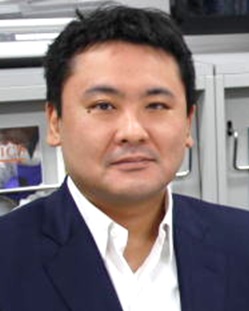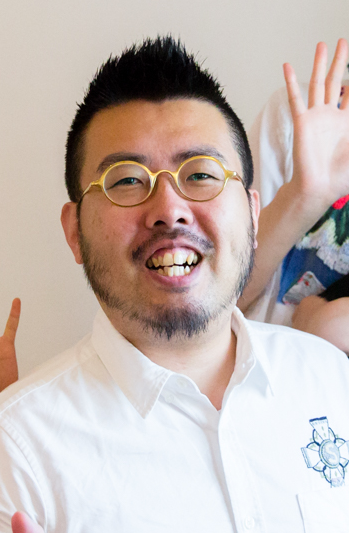ヒトの社会機能:定藤 規弘(大学共同利用機関法人 自然科学研究機構 生理学研究所 システム脳科学研究領域 心理生理学研究部門 教授)
脳科学から褒めの効果を考える
ヒトの社会は、血のつながらないヒトとヒトとの間の役割分担で成り立っています。ここで大切なのは、他人のためにみずから行動すること(向社会行動)です。この向社会行動が起こる理由のひとつとして、他人に「ほめられる」ことがあります。「ほめられること」は他人からのポジティブな評価であって「社会的な承認」です。「ほめ」を脳内で処理するときには、「報酬系」(お金をもらったときなどのように、心地よい気持ちを引き起こす神経回路)と、他人の心を推測するときのしくみの、両方が関連していることがわかりました。つまり、お金をもらったときも、他人にほめられたときも、同じような報酬系という脳の活動が起こる一方、褒められたことを理解するためには、他人の意図を正確につかむという社会能力が必要であるのです。他人に「ほめられること」は、私たちが育ち、学び、幸福に生きていくために、どのような効果があるのでしょうか。 神経科学と人文科学をつなぐ架け橋となる「脳機能イメージング」の研究を中心に、情緒との関係で説明したいと思います。
講師
定藤 規弘 先生
大学共同利用機関法人 自然科学研究機構 生理学研究所 システム脳科学研究領域 心理生理学研究部門 教授
日時
2022年9月22日(木)13:00~17:30(12:40より受付開始)
※定藤先生の講義は、14:20~15:30です。
場所
オンライン講義←ハイブリッド開催より変更になりました
お問い合せ先
本アカデミーに関するご質問等は、「各種お問い合わせフォーム」より、お問い合わせください。
講師紹介
定藤 規弘(さだとう のりひろ)先生

現職
- 大学共同利用機関法人自然科学研究機構 生理学研究所 システム脳科学研究領域 心理生理学研究部門 教授
経歴
- 1983年 京都大学医学部医学科卒業,医学博士
- 1988年 – 1990年 米国NIH客員研究員
- 1995年 – 1998年 福井医科大学高エネルギー医学研究センター講師
- 1998 年 福井医科大学高エネルギー医学研究センター 助教授
- 1999 年 – 現在 大学共同利用機関法人自然科学研究機構生理学研究所(旧:岡崎国立共同研究機構生理学研究所) 教授
研究概要
発達期における社会能力の正常な獲得過程を実証的に解析するとともに、獲得過程における病態を明らかにすることを目的として研究を進めてきた。①まず乳幼児から学童にいたるまで、順序だてて出現する行動里標に注目し、発達過程で出現する社会能力の要素過程としての(1)自己認知1(2)生物学的動きに対する偏好(同種偏好)2(3)相互模倣3 (4)嘘4(5)皮肉5-7(6)道徳4 (7)共感8 (8)向社会行動9-11 の神経基盤をfMRIにより明らかにした。特に、ヒトの向社会行動の誘因の一つとして社会報酬について「他者からの良い評判の獲得」は金銭報酬獲得時と同様に報酬系を賦活させる」という仮説のもと実験を行ったところ、報酬系として知られる線条体の共通賦活を見出した。さらに、自己から他者への働きかけの結果としての他者の反応(社会的随伴性)も報酬となることを示した12,13。これらの結果は、相互予測性が社会性発達の駆動力となることを示している。②発達初期における対人関係における相互主体性の神経基盤を明らかにする目的で、複数個体での視線・行動計測法とhyperscanning fMRIの開発を進め、見つめ合いと共同注意、共同作業、相互模倣における神経活動の個体間同期現象を明らかにした14-18。
主な業績
- Morita, T. et al. The anterior insular and anterior cingulate cortices in emotional processing for self-face recognition. Soc. Cogn. Affect. Neurosci. 9, 570–579 (2014).
- Morito, Y., Tanabe, H. C. C., Kochiyama, T. & Sadato, N. Neural representation of animacy in the early visual areas: A functional MRI study. Brain Res. Bull. 79, 271–280 (2009).
- Miyata, K. et al. Neural substrates for sharing intention in action during face-to-face imitation. Neuroimage 233, 117916 (2021).
- Harada, T. et al. Neural correlates of the judgment of lying: A functional magnetic resonance imaging study. Neurosci. Res. 63, (2009).
- Uchiyama, H. et al. Neural substrates of sarcasm: A functional magnetic-resonance imaging study. Brain Res. 1124, (2006).
- Uchiyama, H. T. et al. Distinction between the literal and intended meanings of sentences : A functional magnetic resonance imaging study of metaphor and sarcasm. CORTEX 48, 563–583 (2011).
- Matsui, T. et al. The role of prosody and context in sarcasm comprehension: Behavioral and fMRI evidence. Neuropsychologia 87, 74–84 (2016).
- Takahashi, H. K. et al. Brain networks of affective mentalizing revealed by the tear effect: The integrative role of the medial prefrontal cortex and precuneus. Neurosci. Res. 101, 32–43 (2015).
- Izuma, K., Saito, D. N. & Sadato, N. Processing of Social and Monetary Rewards in the Human Striatum. Neuron 58, 284–294 (2008).
- Izuma, K., Saito, D. N. & Sadato, N. Processing of the incentive for social approval in the ventral striatum during charitable donation. J. Cogn. Neurosci. 22, 621–631 (2010).
- Izuma, K., Saito, D. N. & Sadato, N. The roles of the medial prefrontal cortex and striatum in reputation processing. Soc. Neurosci. 5, 133–147 (2010).
- Sumiya, M., Koike, T., Okazaki, S., Kitada, R. & Sadato, N. Brain networks of social action-outcome contingency: The role of the ventral striatum in integrating signals from the sensory cortex and medial prefrontal cortex. Neurosci. Res. 123, 43–54 (2017).
- Sumiya, M. et al. Attenuated activation of the anterior rostral medial prefrontal cortex on self- relevant social reward processing in individuals with autism spectrum disorder. NeuroImage Clin. 26, 102249 (2020).
- Saito, D. N. et al. “Stay Tuned”: Inter-Individual Neural Synchronization During Mutual Gaze and Joint Attention. Front. Integr. Neurosci. 4, 1–12 (2010).
- Tanabe, H. C. et al. Hard to “tune in”: neural mechanisms of live face-to-face interaction with high-functioning autistic spectrum disorder. Front. Hum. Neurosci. 6, 1–15 (2012).
- Koike, T. et al. Neural substrates of shared attention as social memory: A hyperscanning functional magnetic resonance imaging study. Neuroimage 125, 401–412 (2016).
- Koike, T., Sumiya, M., Nakagawa, E., Okazaki, S. & Sadato, N. What Makes Eye Contact Special? Neural Substrates of On-Line Mutual Eye-Gaze: A Hyperscanning fMRI Study. Eneuro 6, ENEURO.0284-18.2019 (2019).
- Koike, T. et al. Role of the right anterior insular cortex in joint attention-related identification with a partner. SCAN 14, 1131–1145 (2019).






